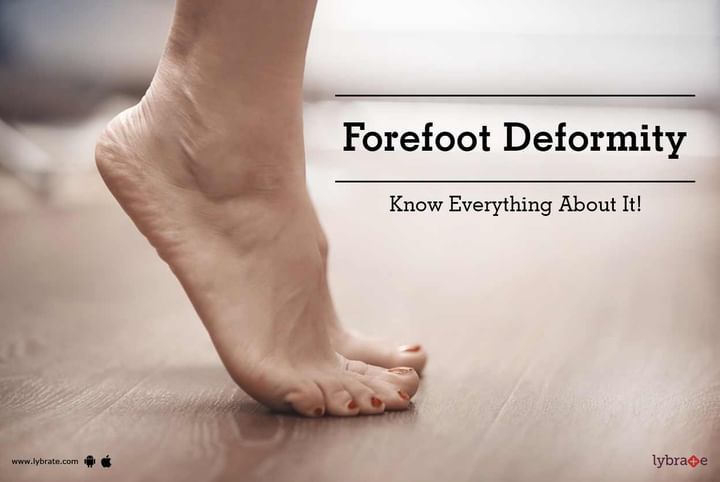Forefoot Deformity - Know Everything About It!
A problem in the foot often results in rheumatoid forefoot deformity. The symptoms of this problem include pain and deformities in the foot and ankle. The forefoot gets symmetrically affected and the first rays give rise to hallux valgus, which drives the deformity of the toes.
Types of Deformities-
There are multiple foot deformities that can occur as a result of rheumatoid arthritis:
- Hallux Valgus
- Bunion deformity with problem at the MTP joint (Metatarsophalangeal joints)
- Clawing of toes
- Dislocation of the lesser MTP joint
- Increased plantar pressure
Deformities and pain are usually detected by a physical examination by the physician and at times an x-ray can be suggested for the same as well.
Treatment
1. Non-Operative
The primary goal of non-operative treatment is to make the deformed foot feel comfortable. The extent of the deformity is first diagnosed and then this treatment can be suggested based on it. It basically consists of pain control, shoe modification and medical management techniques:
- Wearing comfortable shoes to minimize the pain associated with the deformity
- Custom made or store bought inserts to offload prominent area
- Corn pads or paddings to protect bony prominence
- Specific devices can be used to eradicate clawing of toes
- Activity modification to manage pain better
- Physical therapy or stretching to improve joint mobility
2. Operative
Operative treatments are sought when the condition of the deformities is serious and the patient suffers from remarkable pain:
- Hallux Valgus is the most common form of foot deformity and can be managed with a surgery of arthroplasty, osteotomy or arthrodesis. Correction of the Hallux Valgus has good effects of controlling deformities and pain associated with rheumatoid arthritis.
- Procedure to correct clawed toes based on its intensity
- Bunion correction surgery for bunion deformities
Recovery Period
Each procedure has its own recovery period and in most cases, it can be limited to a range of 6 weeks to get back to normalcy. After 6 weeks, physical therapy may be suggested to increase activity gradually. To gain full mobility it might take around 3-6 months, depending on the patient’s age and condition. Relief is generally noticed by the 6th week, but to get back to full recovery it might take months.
Complications
Common surgical complications can be applicable to operative procedures. There can be a compromise to the blood supply to the tip of the toes, blood clots, pulmonary embolism, recurrence of deformity. Such complications are to be addressed by the physician to reconsider the right therapy
Treatments for forefoot deformities are to be performed after thorough diagnosis and investigation. Corrective measures are to be taken to prevent deformities. In case you have a concern or query you can always consult an expert & get answers to your questions!



+1.svg)
